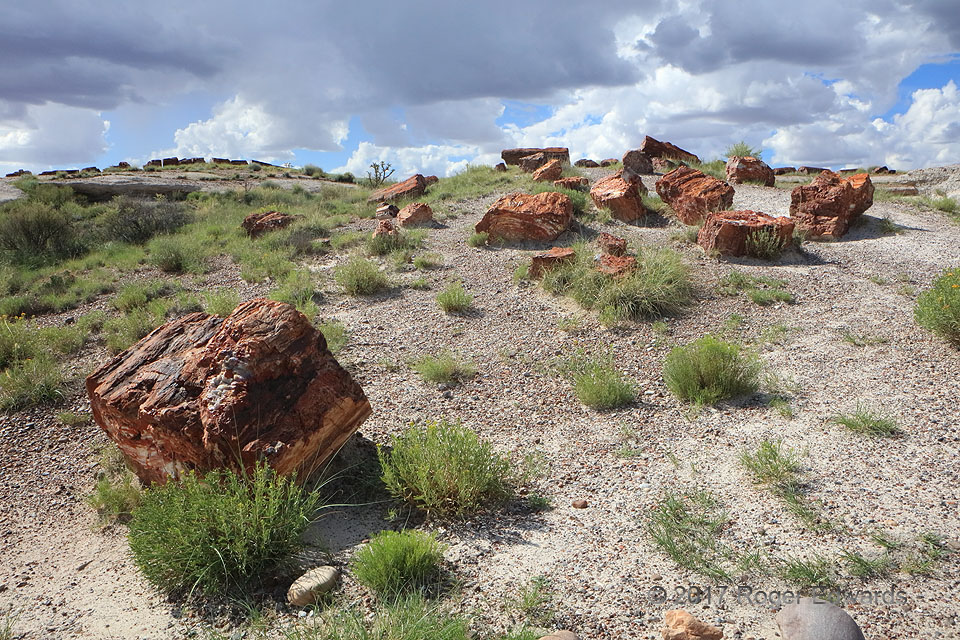Buried by floods of mud a quarter billion years ago, exhumed relatively recently by uplift-accelerated erosion, these silica forms mimic the wooden logs they replaced underground, cell by cell. These chunks probably wore out of softer rock ledges as high, or higher than, the log-festooned platform at rear left. Background bases of building convection remind us how these petrified logs came to see the light of day after so long buried. The greatest erosive agent in this high desert is summertime thunderstorms and resulting flash flooding, with wind a nontrivial conspirator in the plot, and an assist from freeze-thaw cycles in winter. The western part of the area of convection offered infrequent but scenic lightning in the succeeding Sedona evening.
11 SSW Adamana AZ (1 Aug 17) Looking NW
34.816, -109.8662
